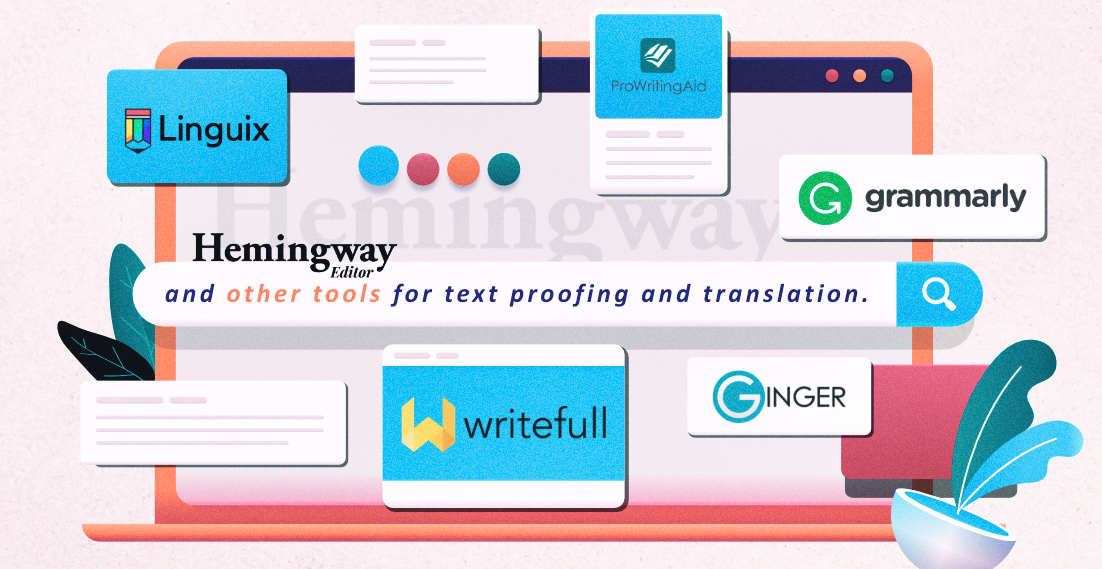CAT tools and translation memory. How to use them efficiently?

The translation industry is demanding when it comes to many aspects. As a Translator, you have certainly experienced a situation where the huge amount of work and duties simply overwhelmed you. Regardless of your experience, beginner or expert, you are probably looking for the perfect solution to improve your efficiency. It’s worth mentioning that translating text sentence by sentence and rewriting it manually into a file is a tedious task that you can avoid. This is possible thanks to the translation memory and CAT tools.
Technology driven translations at lingy.pro
CAT tools for Translators
Currently, there is a huge selection of tools for translators on the market that will improve your work or even… do it for you. They are not perfectly accurate but they save time incomparably. CAT programs are such tools. They use translation memory. What does the CAT translation process involve and why is it essential in your daily work as a Translator?
What are CAT tools?
Paradoxically, CAT solutions, although their name seemingly indicates a cute pet, have nothing to do with a cat. However, you can make a small comparison: their presence makes work much easier. CAT stands for Computer Assisted Translation. Such tools use translation memory that is stored in a database.
How do CAT tools work?
What does the work with a CAT tool look like? You have certainly used Google Translate many times. You need to choose your desired languages, enter text in one column, and the translated content will appear in the other. Google translate is one of such CAT tool (although in a very simplified form).
The work with CAT tools is simple: enter content you want translated and the tool will translate it for you. Fast, simple and fun. How is this possible? This is where the concept of translation memory comes into play. It is responsible for the entire translation process and makes working with CAT so enjoyable.
What is CAT translation memory and how does it work?
The translation memory used by CAT tools is a file (or a file set) in which there are at least two language versions of a given text. To make it more clear, let us put it this way: once you translate a word or sentence, the translation of this word or sentence is saved in the database. Thanks to the translation memory, the tool remembers the given sequence.
So the more translations you complete in a CAT tool, the bigger the database will be, eventually creating a huge archive. This is extremely important in the case of specialized terminology, characteristic of a given industry, e.g. medical, legal, etc.
Translation memory and specialized expressions
So how does the translation memory work for such specific areas? It is quite simple. As soon as the content includes characteristic, repeated phrases, the tool will automatically suggest their translation. Thanks to this, you do not have to translate them every time, which significantly improves your daily work.
So if you’ve ever translated a specific word (or even a whole sentence), that sequence is automatically saved in the translation memory records. Thanks to this, as soon as the CAT tool detects a similarity in the selected language pair, it will suggest the best translation alternative. Based, of course, on how you translated the sequence previously.
Why is it worth using CAT tools by translators?
The larger the archive of the translation files, the better. This will be primarily associated with huge time savings. Translation of the same repeating phrases is time-consuming and tedious. Meanwhile, the tool remembers what has already been translated and when it recognizes the words during the next translation, it will translate them automatically.
Translation memory and CAT tools – making work more effective
Using CAT tools not only facilitates the work by suggesting the translation, but it can even do the work for the Translator. The larger the database in the archive, the less human effort is involved in the translation. Working with a CAT tool that uses a translation memory can even limit the translator’s role merely to translation validation.
All you have to do is upload a text file and the tool will translate it for you. The job of the translator is to review the translated content and check it for correctness. This is invaluable especially when you have a lot of work and you have to translate a lot of content in an extremely short period.
Such memorized language files are useful on a daily basis, regardless of whether there is a lot of work or not. It is primarily about helping with repetitive content, especially when it comes to specialized, industry-specific phrases. The translator does not have to translate such text manually each time. The translation memory will do it automatically. Work becomes faster and much more fun immediately!
How to work with translation memory and CAT?
A CAT tool is a program created by a human. While the help of the software is invaluable, you must always take into account possible errors and shortcomings. Even the best, most advanced tool can commit errors. Therefore, when using CAT tools on a daily basis, you need to reserve time to check the translation for linguistic and substantive correctness.
Therefore, your role as a Translator is to achieve a high rate of the post editing effort. This index provides information on how much time you devoted to editing translation suggestions. The higher it is, the better, because it means that your commitment to working on the text to make it sound natural was at a sufficient level. Keep in mind that translation suggestions in CAT tools are merely suggestions. Ultimately, you, as a foreign language specialist, are responsible for the quality of your own work.
What are some CAT tools available on the market?
There are quite a few solutions on the market that are based on translation memory. One of the most popular and well-known CAT tools is SDL Trados, which is a kind of industry precursor. Nevertheless, you’ll also find quite a few paid and free alternatives to it, including:
● OmegaT;
● MateCAT;
● GNOME Translation Editor;
● DEJA VU;
● PO Editor;
● memoQ translator pro;
● Smartcat;
● Memsource;
● Lokalise;
● Transifex;
● SYSTRAN 8;
● LingoHub;
● Crowdin;
● Text United;
● MetaTexis.
Each of these tools has its own significant advantages as well as disadvantages. Which one will be the best? It is a matter of individual expectation and what you really need. So, before you make your final decision, read the reviews, test and choose the CAT tool that will suit you best.
How can translation memory and CAT tools help you?
How can such tools help you in your daily work? First of all, you can (and even should) use them in your daily work, which will make it faster, more enjoyable and more effective. Translation memory and CAT tools are solutions designed with translators and their needs in mind. You have a choice of several different tools that work based on the above technology. The decision is entirely up to you.
Other articles:
Tools useful in the work of a translator – simplifying your daily tasks
Audiovisual translation – what is it?
How to translate videos and create subtitles for movies?
Convenient translations 24/7
Marketing translation as the key to success of the fashion industry. Cooperation with a popular fashion brand
We cooperated with many customers on a daily basis. They include local companies, international enterprises and well-known brands. What are the similarities between all of them? Everyone expects high-quality translations that will help in business development. Additionally, professional translations affect their image, contribute to the opinions of recipients and are the decisive factor when it […]
Hemingway Editor and other tools for text proofing and translation
Typically, content writers first note down the message they wish to put across to their audience. Then, they re-read and edit the text. This way, they can achieve better readability, understanding and structure, and at the same time they can correct any errors in the content. It is a complex process, but fortunately there are […]
Translation of advertising slogans – how not to fall into the language trap?
Advertising translation involves the process of transferring advertising messages from one market to another. The advertising discourse is created in a language that is not only a communication tool, but also an expression of culture. This makes ad translation a highly accuracy-demanding activity. Translating slogans requires both a cultural and linguistic connection. Adapting a brand […]
Top 8 Languages for E-commerce purposes: Boosting Global Reach Through Effective Translation
Do you manage an e-shop and want to source customers abroad to increase profit? Translation will be the basis for reaching foreign recipients with your offer. You need to start speaking their local language and adjust product descriptions or service descriptions to the country where you intend to sell them. This process of adapting your […]



